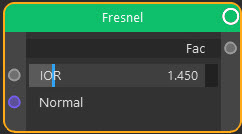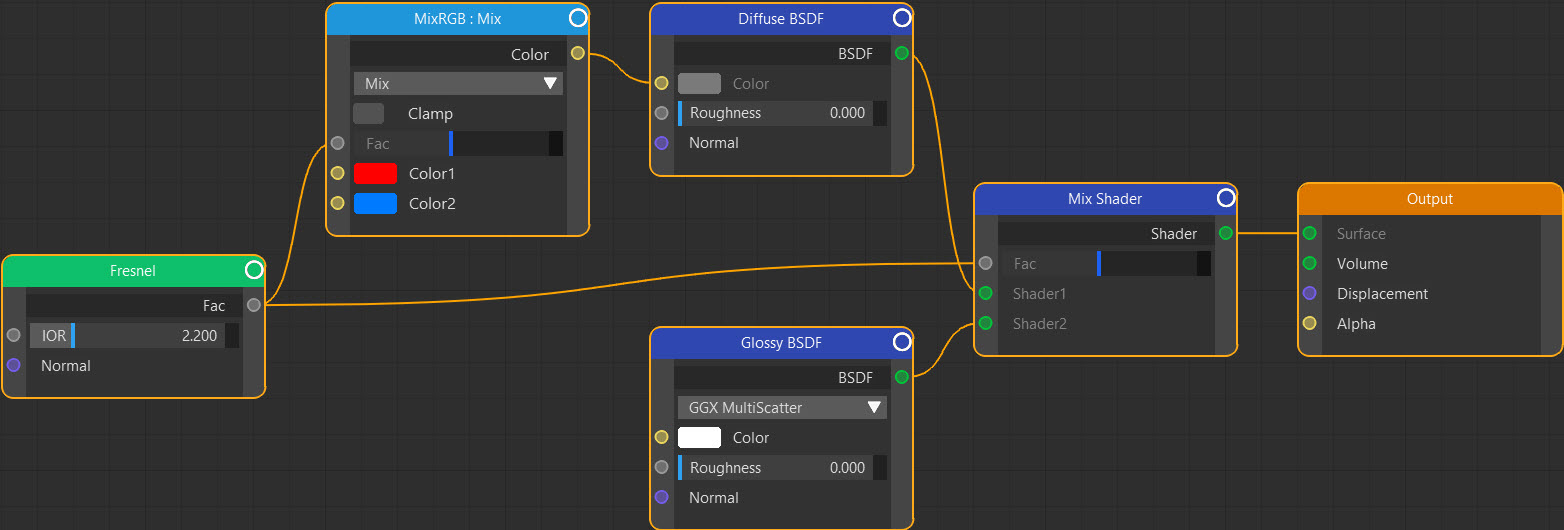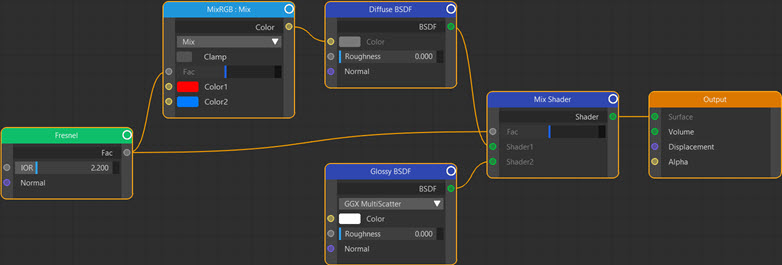Input: Fresnel
Node Interface

Example Output
in this scene, a MixRGB node mixes two colours and is linked to a Diffuse BSDF node. This is then mixed with a Glossy BSDF node using a Mix shader node. On the left, no Fresnel input has been used. On the right, a Fresnel node with an IOR of 2 is driving both the MixRGB node and the Mix shader node. Note the subtler reflections and the difference in colour output when Fresnel is used. The node tree for the right hand image looks like this:
Overview
| Function | Produces a Fresnel effect |
| Nearest C4D equivalent | Fresnel shader |
This node lets you control reflections according to the Fresnel effect. What this does is to alter reflection from the surface according to the viewing angle, so that surfaces which are not very reflective when seen head-on become much more so when seen at a grazing angle. See here or the Cinema 4D documentation for more details.
You could use this node to drive the Fac input of a Mix shader which mixed Diffuse and Glossy nodes, for example. This will generate more realistic reflections from the object.
Settings
Note: a * symbol next to the name indicates the parameter also has an input port. A # symbol indicates that the parameter can only be changed with an input node, not in the node itself.
IOR *
The index of refraction. Different materials have different IORs and this will affect the rendered result. The default value of 1.45 is the IOR of plain glass.
Normal #
With this setting you can alter the surface normals of the object, which will have a significant effect on the rendered output since it will affect the way light is reflected from the surface.
This setting requires a vector input, so you need to link another node with a vector output port to this port.
Output
Fac
The result of calculating the Fresnel effect for a given point on the object surface.
Node tree


